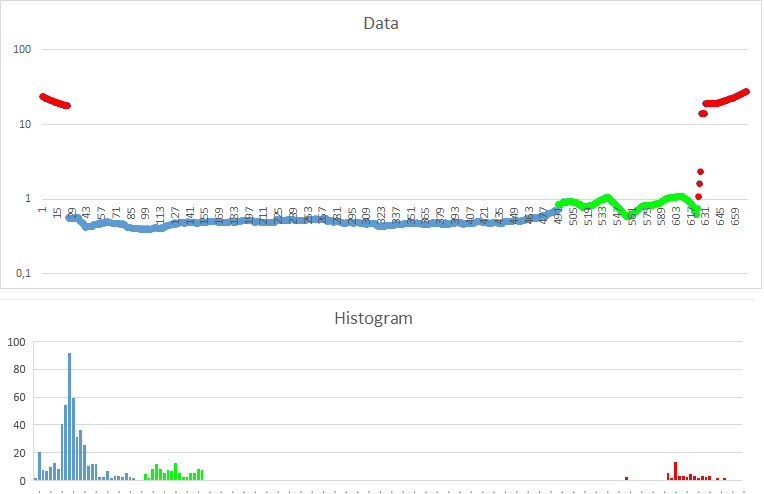I have this data, and I need to detect the outliers.
The outliers are clearly visible on the borders (start and end, in red). And I only care for outliers present at the start or end.
I could easily make a rule as "all values over 10 are outliers", but I do not have any assurance that the distance will always be over 10.
I could also say "a big distance between points means an outlier", but again, it is arbitrary to say what is a "big distance".
Also, part of the licit data has (in green) some outliers characteristics, compared to the mainstream data (in blue).
I had been checking some algorithms for detection of outliers, but they always assume something wrong, like a gaussian distribution, or just declaring "outliers" to all quartiles over 75%.
Is there any more general criteria for detection of outliers?

